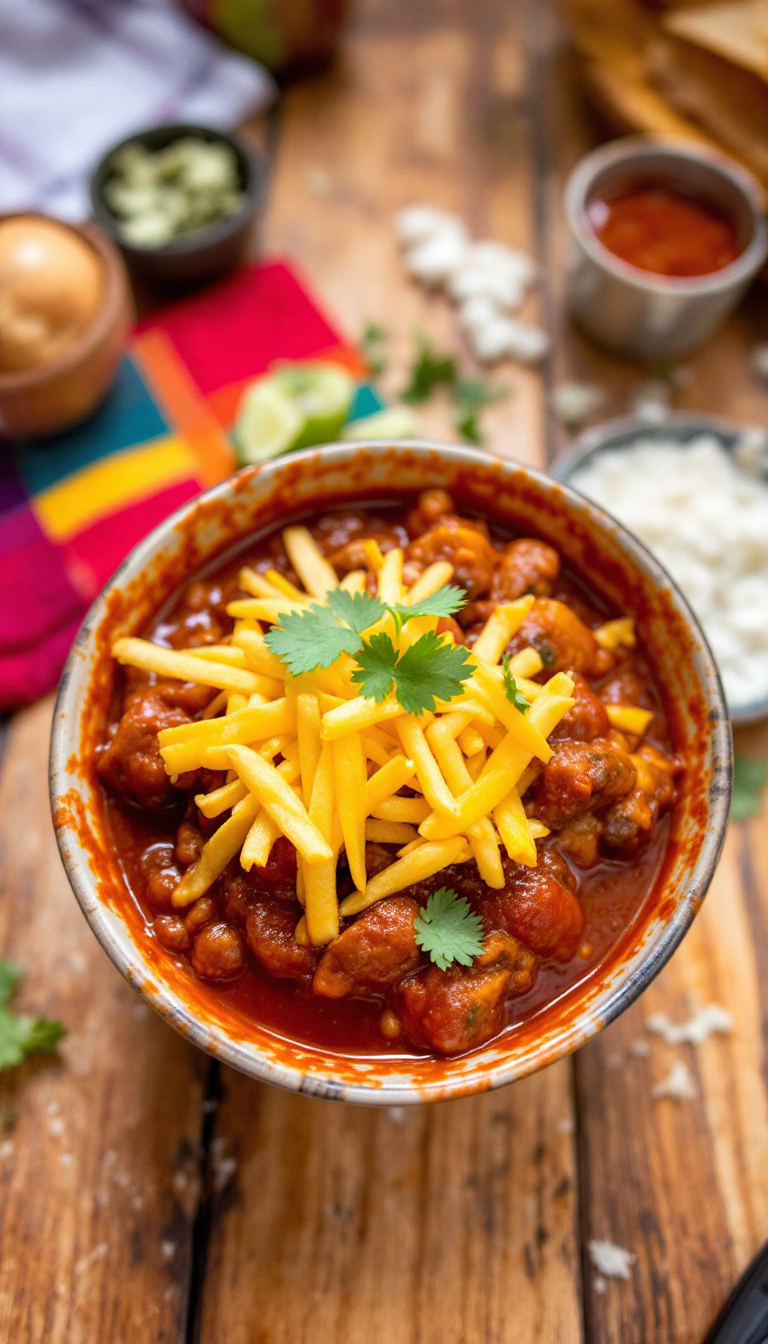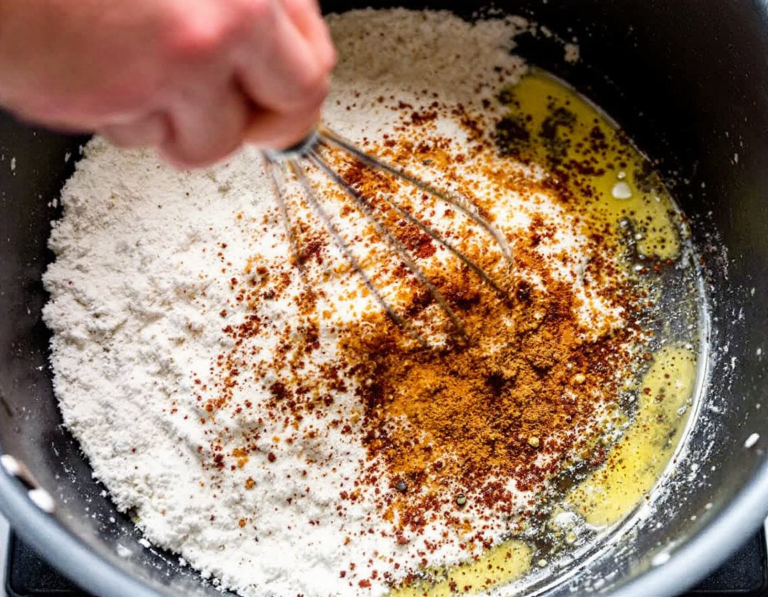
Ah, enchiladas, the ultimate comfort food—smothered in a sauce so rich, it feels like a warm hug on a cold day. I remember the first time I tried making enchilada sauce at home; it was a chaotic dance of spices, tomatoes, and a bit of hesitation—yet the result was pure magic. In just ten minutes, you can whip up a sauce that sings with flavor, maybe even better than that taco joint you swear by.
Steps
- Before starting, measure the dry ingredients (flour, chili powder, cumin, garlic powder, oregano, salt, and optional cinnamon) into a small bowl. Also, place the tomato paste and vegetable broth near the stove for easy access.
- Heat olive oil in a medium pot over medium heat. Once the oil is hot enough, test by sprinkling a bit of the flour mixture to see if it sizzles.
- Add the flour and spice mixture to the hot oil, whisking constantly. Cook for about a minute until the mix becomes fragrant and slightly darkens in color.
- Whisk in the tomato paste until well combined, then gradually add the vegetable broth while whisking to avoid lumps.
- Increase the heat to medium-high to bring the mixture to a simmer, then lower the heat to maintain a gentle simmer. Continue cooking for 5 to 7 minutes, whisking often, until the sauce thickens.
- Remove the pot from heat and stir in the vinegar. Season with freshly ground black pepper and additional salt to taste. The sauce will thicken more as it cools.

Ingredients
- 3 tablespoons olive oil
- 3 tablespoons flour (whole wheat, all-purpose, or gluten-free flour blends)
- 1 tablespoon ground chili powder
- 1 teaspoon ground cumin
- ½ teaspoon garlic powder
- ¼ teaspoon dried oregano
- ¼ teaspoon salt, to taste
- Pinch of cinnamon (optional)
- 2 tablespoons tomato paste
- 2 cups vegetable broth
- 1 teaspoon apple cider vinegar or distilled white vinegar
- Freshly ground black pepper, to taste
FAQ
- Can I make this enchilada sauce gluten-free?
- Yes, you can make this sauce gluten-free by using a gluten-free all-purpose flour blend. The recipe has been tested with Bob’s Red Mill brand and works great.
- How can I store leftover enchilada sauce?
- You can store any extra sauce in the refrigerator for up to five days. Alternatively, you can freeze it for up to three months. Just let it cool to room temperature before transferring it to a container, leaving some space at the top for expansion.
- Is there a way to make this sauce without tomatoes?
- Yes, you can omit the tomato paste if you want a tomato-free version. You might want to increase the amount of spices to compensate. The sauce will have a different taste compared to store-bought versions but will still be delicious.
- What if I don’t like cinnamon in savory dishes?
- The cinnamon in this recipe is optional. If you prefer not to include it, simply leave it out. However, a small pinch adds warmth and depth to the sauce.
- How spicy is this enchilada sauce?
- The spice level can be adjusted to your preference. If you’re sensitive to spice or using a particularly hot chili powder, consider reducing the amount.
Tips
- Prepare Ingredients in Advance: To ensure a smooth cooking process, measure out all your dry ingredients, such as flour, chili powder, cumin, garlic powder, oregano, salt, and optional cinnamon, before starting. Keep these, along with the tomato paste and broth, close to the stove for easy access.
- Perfect the Roux: Heat the oil in a medium pot over medium heat until a sprinkle of the flour-spice mixture sizzles on contact. Pour in the flour and spice mix while whisking continuously, cooking until it’s fragrant and slightly darkened in color. This step is crucial for developing the sauce’s flavor and texture.
- Whisk Constantly to Avoid Lumps: When adding the tomato paste and broth, whisk continuously to prevent lumps from forming. This ensures a smooth and well-thickened sauce.
- Adjust to Taste: After removing the sauce from heat, mix in the vinegar and freshly ground black pepper. Taste and adjust with more salt if needed. This final seasoning step is key to achieving the perfect flavor balance.
Equipment
- Medium-sized pot – If you don’t already have a suitable pot for making sauces, you might need one.
- Whisk – Essential for mixing the ingredients smoothly to prevent lumps.
- Measuring spoons – Accurate measurement of ingredients is crucial for the recipe.
- Small mixing bowl – Useful for measuring and holding the dry ingredients before combining them with the oil.
